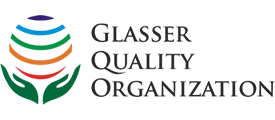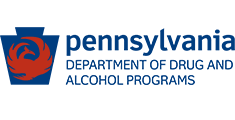The signs, symptoms, and effects of prescription painkiller addiction can be different for every person impacted. Learning about prescription painkiller addiction is one of the first steps towards getting better.
Understanding Prescription Painkiller Addiction
Learn about prescription painkiller and substance abuse
Prescription painkillers have improved the quality of life for those individuals who have been struggling with acute or chronic pain. However, these medications can come with dangers. Regardless of whether they are consumed under the care of certified healthcare professionals, illicitly abused in an attempt at self-medication, or abused for recreational reasons, prescription painkillers present the risk of addiction. Some of the most commonly prescribed prescription painkillers, such as Vicodin, OxyContin, and Percocet, all contain opioids, a very addictive category of substances that also includes heroin and morphine.
This does not mean that consuming a prescription painkiller that has been prescribed by a medical professional is the same as consuming heroin. These medications can be highly beneficial, and the risks are minimized when they are ingested as directed. However, the danger of developing an opioid use disorder is very real, and the risk is dramatically increased when these substances are consumed outside of appropriate medical supervision.
Oxycodone (the active ingredient in Percocet and OxyContin), hydrocodone (Vicodin), and meperidine (Demerol) are synthetic or semi-synthetic opioids, meaning that they are manufactured in a laboratory, but share similar structures with naturally occurring extracts from the poppy plant. They also hold similar properties, including triggering a sense of euphoria, relieving pain, and posing the risk that individuals will develop opioid use disorder. As time passes, those who consume prescription painkillers that contain opioids can become tolerant. Tolerance is the first sign of chemical dependence, which is then followed by the occurrence of painful symptoms of withdrawal when an individual attempts to end the use of the drug or dramatically decrease the amount that he or she has been consuming.
The desire to experience the pleasing effects of an opioid-based painkiller while avoiding the pain of withdrawal can keep an individual stuck within what might feel like a continuous pattern of drug abuse and addiction. It can be extremely trying for an individual in this position to end his or her dependence on opioids without effective care. When comprehensive care is provided, though, an individual can clear his or her body of opioids in a safe and comfortable fashion, and can then finish the therapeutic programming that will help him or her prevent relapse and live a more joyful, healthy life that is no longer controlled by the compulsion to abuse prescription painkillers.
Statistics
Prescription painkiller addiction statistics
According to the National Institute on Drug Abuse (NIDA), more than 52 million Americans have used prescription drugs non-medically at least once within their lifetimes, and six million have done so within the past 30 days. The U.S. Centers for Disease Control and Prevention (CDC) reports that opioid-based prescription medications account for nearly 44 overdose deaths every day in the United States, which averages out to approximately 18 women and 26 men. In 2013, more than 16,000 people died from prescription opioid overdose, and in 2011, the abuse of prescription painkillers was the cause of more than 420,000 emergency room visits.
Causes and Risk Factors
Causes and risk factors for prescription painkiller addiction
The abuse of prescription painkillers and the development of opioid use disorder may be affected by a number of factors, such as:
Genetic: Extensive research supports the fact that a genetic impact can play a role in the development of chemical dependency. For instance, a genetic disposition to impulsivity and novelty seeking might put an individual at risk for abusing these substances and others. Also, studies that included twins and adopted children show that having a biological parent with a substance use disorder increases the chances that an individual will struggle with similar issues.
Environmental: An individual who has suffered from child abuse or other forms of childhood adversity will be at an increased risk for participating in substance abuse, as will someone who struggles with extreme levels of stress that overpower his or her coping skills. Specific to prescription drug abuse, being the victim of an accident or injury that requires treatment including prescription painkillers can be an environmental risk factor for the development of opioid use disorder.
Risk Factors:
- Ease of access to prescription pain medications
- Experiencing severe acute or chronic pain
- Trauma
- Stress
- Prior substance abuse
- Poor coping skills
- Family history of substance use disorders
Signs and Symptoms
Signs and symptoms of prescription painkiller addiction
Below are some of the most typical signs and symptoms that might indicate that an individual has been abusing prescription painkillers containing opioids:
Behavioral symptoms:
- Slurring speech
- Visiting multiple doctors to get prescriptions for painkillers
- Borrowing or stealing medication that has been prescribed to someone else
- Social withdrawal and isolation
- Diminished participation in significant activities
- Deception regarding whereabouts and/or activities
Physical symptoms:
- Itchiness
- Pupil dilation
- Decreased blood pressure
- Constipation
- Impaired coordination
- Heavy perspiration
- Disrupted sleep patterns
Cognitive symptoms:
- Poor decision-making skills
- Confusion
- Disorientation
Psychosocial symptoms:
- Irritability
- Depression
- Drastic changes in mood
Effects
Effects of prescription painkiller addiction
Opioid use disorder that includes prescription painkillers can have a dramatic impact on one’s social, psychological, and physical wellbeing, and can lead to the following negative repercussions:
- Isolation and ostracization
- Development of physical health problems
- Suicide attempt or attempts
- Legal problems, including arrest and incarceration
- Suicidal ideation
- Job loss and chronic unemployment
- Financial distress
- Impaired or destroyed interpersonal relationships
- Family discord, including separation and divorce
- Legal problems, including arrest and incarceration
- Homelessness
Co-Occurring Disorders
Prescription painkiller addiction and co-occurring disorders
Someone who has become dependent on prescription painkillers might also struggle with a co-occurring mental health condition. Below are some disorders that are most commonly diagnosed in those who have also developed opioid use disorder:
- Major depressive disorder
- Other substance use disorders
- Posttraumatic stress disorder (PTSD)
- Persistent depressive disorder
Withdrawal and Overdose
Effects of prescription painkiller withdrawal and overdose
Effects of prescription painkiller withdrawal: Stopping or dramatically reducing one’s use of prescription painkillers after developing a dependency upon them can cause a number of painful withdrawal symptoms, including:
- Watery eyes and runny nose
- Tremors and twitches
- Dysphoria
- Powerful cravings for opioids
- Fever
- Loss of appetite
- Nausea, vomiting, and diarrhea
- Inability to sleep
- Heavy perspiration
- Irritability and agitation
- Pain in bones and muscles
Effects of prescription painkiller overdose: Opioids interact with parts of the brain that also impact involuntary processes such as breathing and heart rate. Therefore, overdosing can put an individual in grave danger. Anyone who shows the following signs and symptoms after consuming a prescription painkiller might require immediate medical attention:
- Breathing problems
- Pinpoint pupils
- Slow or otherwise irregular pulse
- Extreme disorientation
- Seizure
- Loss of consciousness







